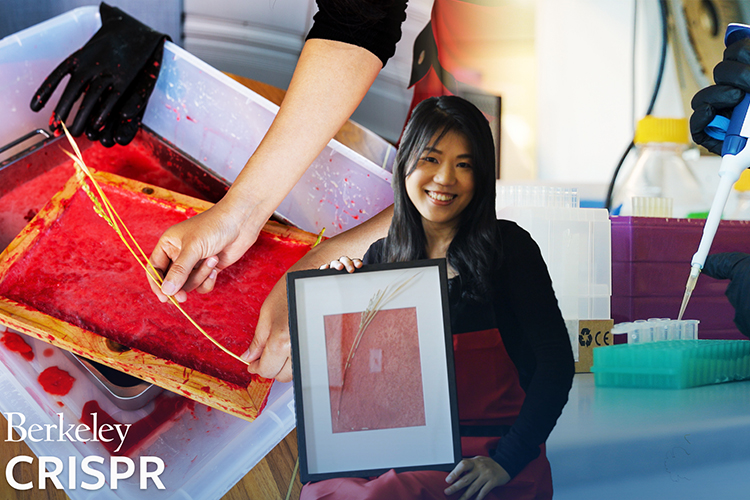CRISPaper: Understanding gene-editing through art
Artist Sheng-Ying Pao incorporates an experimental, CRISPR-modified rice into a traditional Chinese material: rice paper.

August 25, 2020
Artist Sheng-Ying Pao incorporates an experimental, CRISPR-modified rice into a traditional Chinese material: rice paper. (UC Berkeley video by Stephen McNally with Roxanne Makasdjian)
To Sheng-Ying Pao, the power of reframing CRISPR lies in what is absolutely ordinary: paper. In CRISPaper, Pao revisited a cultural past in the ancient art of papermaking.
Over thousands of years, farmers painstakingly converted the wild rice plant into a staple crop. Today, researchers are using CRISPR to change genes to optimize grain yield. However, rice is more than food. In ancient China, it was used to make paper.
Pao took rice stalks from plants edited with CRISPR and ground the fibers into pulp. She then poured the pulp over a mesh screen. Every time she dipped the screen into water, the plant fibers would lift and resettle on top of the mesh, eventually making paper. Through the genome-edited rice plant, an ancient practice was juxtaposed with cutting-edge technology. Pao’s meditative ritual of papermaking is a counterbalance to the strangeness of the source material.
She explains, “We all know that paper wouldn’t last forever. And just because of that, we put in extra care.” This paper is delicate indeed. Light shines through in patches where the fiber is less dense. Woven into the paper, as if growing out of it, is a dried rice stalk. CRISPR might be a powerful technology, but Pao has used it to turn what is familiar into something fragile and unique.